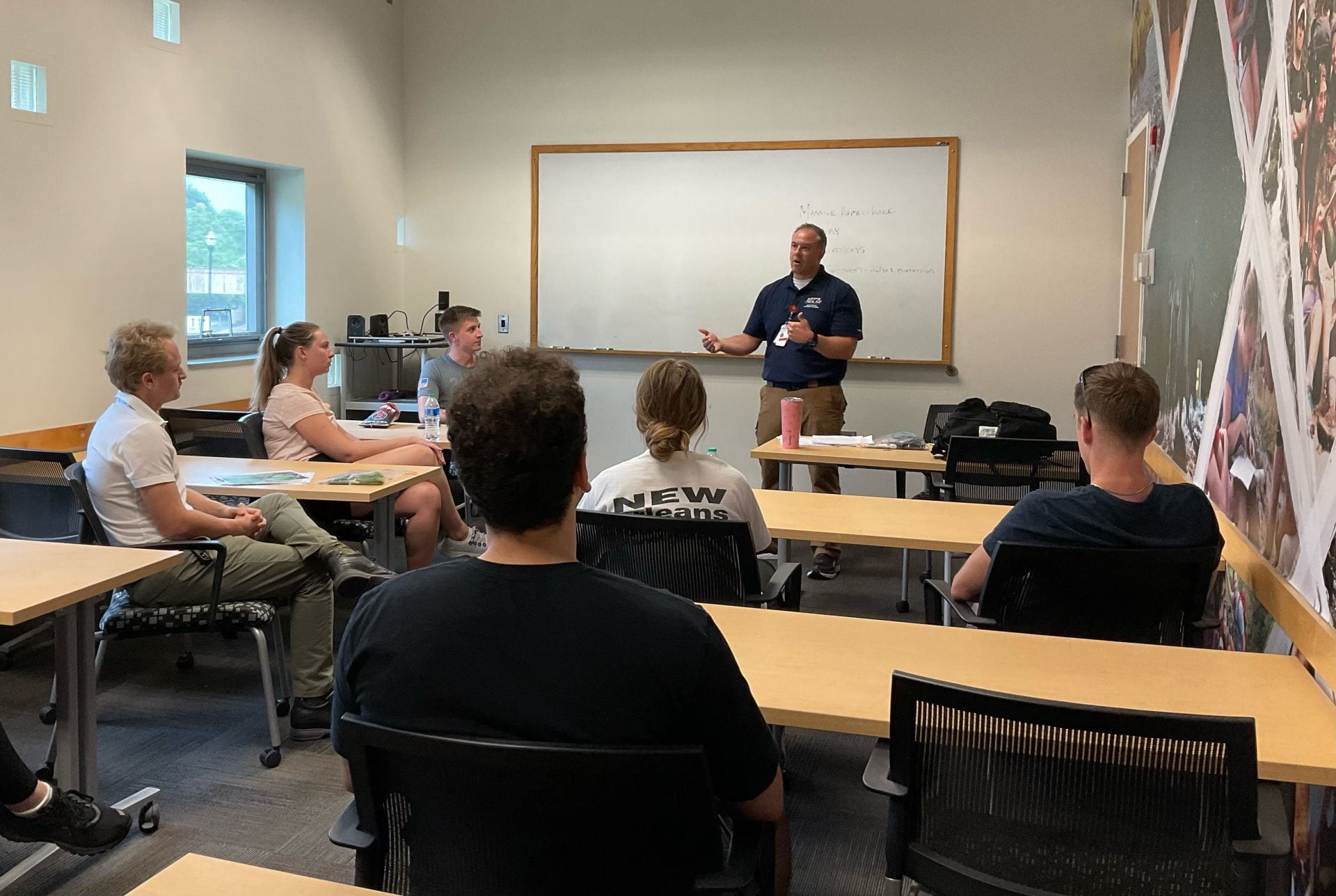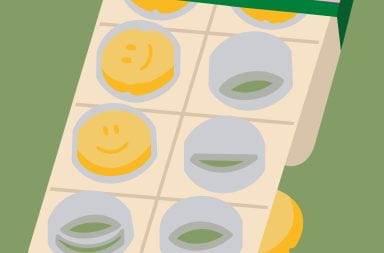
Ohio State students gained valuable knowledge on handling severe injuries in the wild on Monday. Credit: Katherine Simon | For The Lantern
Medical students went wild Monday at Ohio State’s Outdoor Adventure Center.
As part of the Wilderness Medicine Interest Group, medical students gained hands-on experience for treating severe injuries outside of a traditional care setting, Lily Kreber, a second-year medical student, said.
Students rotated through scenarios of a patient suffering a medical emergency, developing a plan to keep them alive until “help” could arrive. Kreber said the situations ranged from bites and stings to severe allergic reactions and lightning strikes.
“We have four imaginary, but very possible, scenarios that could happen in the outdoors and how to assess them from a medical or first responder standpoint,” Kreber said.
Kreber said wilderness medicine skills aren’t limited to just the woods.
“Wilderness medicine is something that happens anytime you’re outside of an office or hospital or care setting that has the traditional tools that you may need,” Kreber said.
Dr. Daniel Bachmann, professor of emergency medicine and faculty advisor of the Wilderness Medicine Interest Group, said the group allows him to bring his passions of teaching and wilderness medicine together.
Bachmann said he uses these wilderness medicine skills when he is deployed on rescue missions, most recently in Kentucky to help rescue flood victims.
“It’s a way you can combine non-medical interests with the medical skills that you’re learning, and it also gives you some tangible skills that you can offer to your group,” Bachmann said. “If you’re out on the trail, and you come across something, you can provide some help to someone.”
Zachary Wykoff, a second-year medical student and president of the Wilderness Medicine Interest Group, said he understands the importance of wilderness medicine because he previously worked as a ski patroller and EMT.
“If you get a trauma patient in the hospital, and you’re a physician, you’re thinking about ‘I’m going to need to get a scan to look at their head, they’re probably going to need surgery to fix a broken bone, big stuff,’” Wykoff said. “When you’re out in the wilderness, you’re thinking, ‘I need to get this patient off the ground, I need to get clothes on them, they’re thirsty and I need to get water, I need to stop that bleed.’”
Kreber said the group is open to all medical students, but most engagement is from students in their first or second year of school.
“You get a good mix of people who want to do it as a career and then people who want to be a doctor and work in a hospital,” Kreber said. “But on the weekends they want to go outside, and if something were to happen, they want to know how to deal with it.”
Bachmann said he likes seeing students seek learning opportunities outside of the classroom, and this group is just one of the many opportunities students have at Ohio State.
Wykoff said he doesn’t think wilderness medicine is included in most medical school curriculums, but it’s important.
“I think it’s extremely important for patient care,” Wykoff said. “I think that in the future there should be more projects actually integrated into medical school curriculum.”


